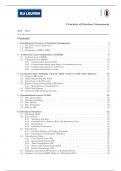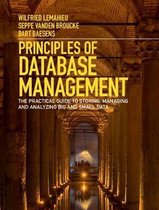Samenvatting
Summary Principles of Database Management
- Vak
- Instelling
- Boek
Volledige samenvatting principles of database management prof. Bart Baesens. Perfect om integraal uit te leren. Bevat alle hoofdstukken uit de les behalve een deel van SQL (H7). Indien nodig wordt er verwezen naar dias of cursus. Zeer handig om te gebruiken voor de taak en om te leren voor het ex...
[Meer zien]





